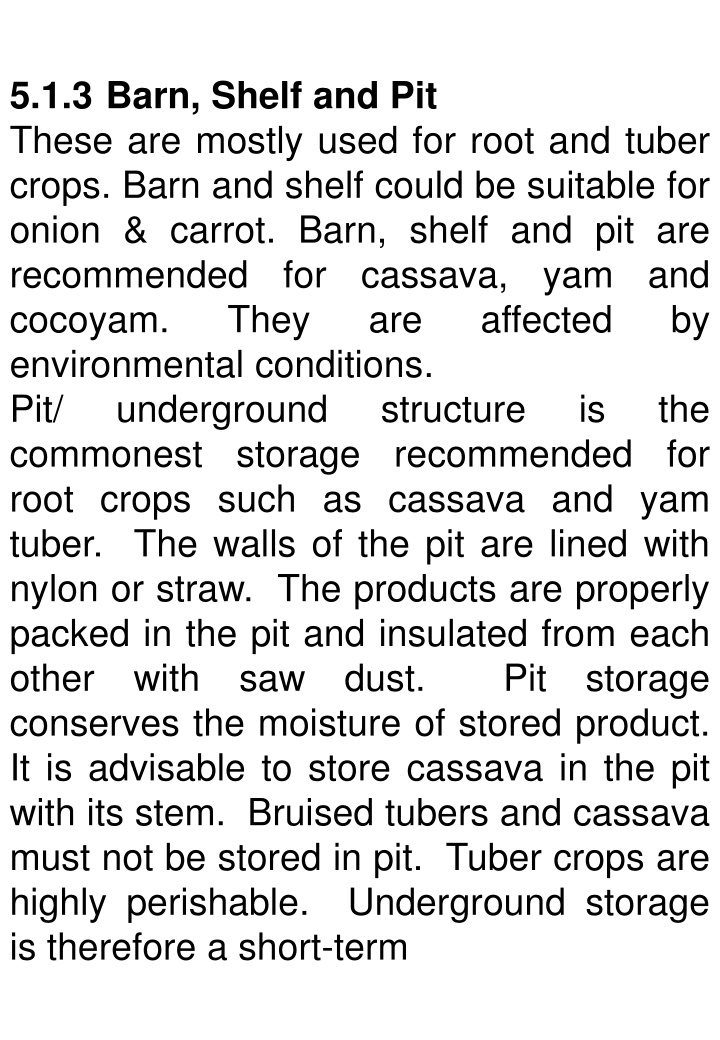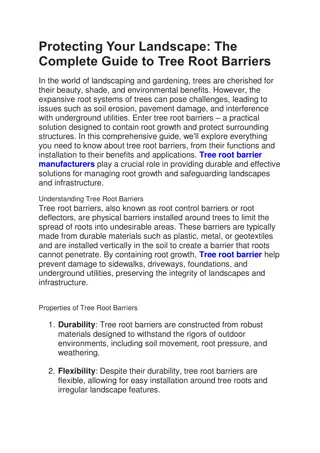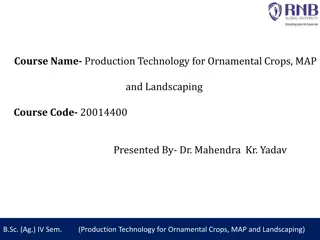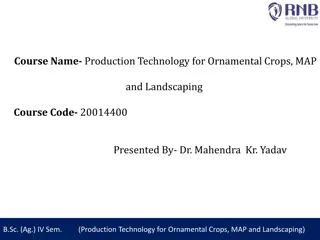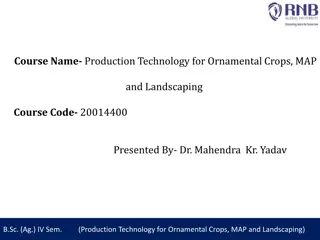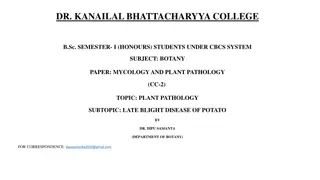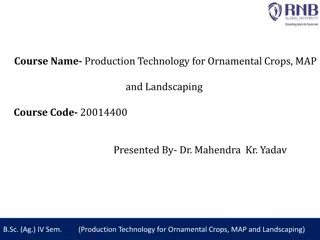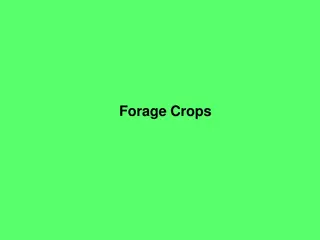Modern Storage Solutions for Root and Tuber Crops
Explore traditional and modern storage structures suitable for root and tuber crops like cassava and yam. From pits and shelves to improved cribs and warehouses, learn about different storage methods to preserve these perishable crops effectively.
Download Presentation

Please find below an Image/Link to download the presentation.
The content on the website is provided AS IS for your information and personal use only. It may not be sold, licensed, or shared on other websites without obtaining consent from the author.If you encounter any issues during the download, it is possible that the publisher has removed the file from their server.
You are allowed to download the files provided on this website for personal or commercial use, subject to the condition that they are used lawfully. All files are the property of their respective owners.
The content on the website is provided AS IS for your information and personal use only. It may not be sold, licensed, or shared on other websites without obtaining consent from the author.
E N D
Presentation Transcript
5.1.3 Barn, Shelf and Pit These are mostly used for root and tuber crops. Barn and shelf could be suitable for onion & carrot. Barn, shelf and pit are recommended for cassava, yam and cocoyam. They environmental conditions. Pit/ underground commonest storage recommended for root crops such as cassava and yam tuber. The walls of the pit are lined with nylon or straw. The products are properly packed in the pit and insulated from each other with saw dust. Pit storage conserves the moisture of stored product. It is advisable to store cassava in the pit with its stem. Bruised tubers and cassava must not be stored in pit. Tuber crops are highly perishable. Underground storage is therefore a short-term are affected by structure is the
Shelf is an improved storage for root crops. Root crops could be stored on shelf for a longer time, though moisture loss is much. Shelf is mostly made of wood or metal. Individual shelf has up to 5 rows. The rows must not be overloaded and proper air circulation must be ensured. Shelf could also be adapted for the storage of onion. 5.2 Modern Storage Structures Modern storage structures are mostly used for medium or long term and medium or large scale storage. These include: Improved crib Ware house Silo/ Bin Controlled atmosphere storage system Refrigeration Cold storage Evaporative coolant system (ECS) Hermetic and nitrogen storage systems
5.2.1 Improved Crib Improved crib storage has recently grained research interest because of its potentials. The traditional crib storage has been improved. We have the conventional crib storage made of improved material such as sawn wood, iron, wire mesh, galvanized sheet, plastic roof and treated bamboo. The conventional crib has adequate aeration, retarded mould growth and insect infestation and the roof considerably protects stored crop from direct rainfall. Conventional cribs have increased capacity and could store up to 15 tons of cob maize. It is therefore, used for medium scale storage. The long side of the crib should face the windward direction for However, the performance of the conventional crib is not optimal during the raining season. This is because it is exposed and the performance is affected by the climatic conditions. Improved crib structure is an improvement over the traditional crib in terms of design, capacity, construction material and performance. It has upgraded the traditional crib to medium scale storage. Each unit can accommodate 10-20 tons proper aeration.
An improvement over the conventional crib storage is the In-bin crib. The storage chamber of the In-bin crib is not directly exposed. It is enclosed in a metal bin. This crib utilizes a suction fan to ensure adequate air circulation. This crib is known to prevent product from being contaminated with dust and particulate material. Moisture build is also reduced during the raining season. This crib is however still experimental. However, it has not being commercialized. 5.2.2 Warehouse Ware house is used for medium but mostly large scale storage for bagged or pilled/ bulk products such as grains, flour, etc. Wooden pallets are used for staking. Material handling and ventilation equipments are essential. Prevention of roof leakage and water infiltration through the floor are most essential. Water proof materials are used for flooring & proper drainage important. Bagged products are normally stored in the warehouse. Occasionally, bulk materials are also stored in the warehouse. Modern warehouse are provided with material handling equipment especially when bulk materials are stored. Leaking roofs and cracked walls must not be allowed in warehouse Bagged product
